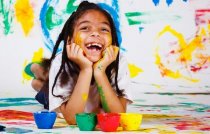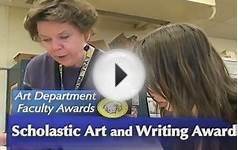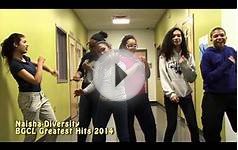I believe art has a universal language of engagement, transformation, and education. I've come to realize through teaching and parenting that art is not only vital to the growth of young people, it is necessary. Art creates a vehicle that can change the hearts and minds of people. For as long as I can remember, visual art has always been fun and challenging; it came natural to me. It’s been my safe haven. However, in school there were always two spectrums where I resided: the first being in art classes engaged and committed to assignments, the second being the only black girl/woman student in the class. I slowly, but surely became aware of the absence of my own reflection. Most artists I learned about rarely looked liked me. These artists and art styles were far removed from my everyday living experiences. Even when introduced to higher level art history classes in college, I noticed that there were little historical references to cultures outside of Europe.
Why wasn’t I being explicitly taught African American art heritage by my teachers? I began to contemplate what institutional systems of race, class, and gender were in place. Who decided which stories were worth telling, and which ones to be omitted? Where was my reflection and why was it so small compared to European artist contributions? Who had the lessons and books on global artists and movements that essentially ‘birthed’ this thing we call art?
Access to instruction, access to points of view, and transparency to critically analyze these points of view are three major concerns for arts education today. Black and brown students make up the majority of Chicago Public Schools population, therefore these access points are affected by class, gender, social status and race. According to CPS statistics, African American students make up 39.3%, while Hispanic students make up 45.6% of the current student enrollment. White students in stark contrast, consist of 9.4% of CPS student enrollment as of 2014. Even with this demographic makeup, art works by artists of color continue to remain at the margins of the art educational system in America.
The National Center for Educational Statistics (NCES) has estimated that 85% of public schools in the United States offer some level of art instruction. Although this sounds like a passing grade, there lies an equity gap between low-poverty schools and high-poverty schools. Art students who are economically disadvantaged are not offered the same enrichment experiences as affluent suburban art students. This gap widens when we look at access to educational resources, availability of arts instruction, accurate historical references, diverse course offerings, and course content. Historical art contributions from Asia, Africa, Australia, Antarctica and the Americas are of significant importance, yet our schools continue to uplift a Euro-centric role of art appreciation. This equity gap denies children of color insight to see themselves in a rich historical narrative. Current educational art practices in schools continue the perpetuation of inaccurate and incomplete art education nationwide, limiting possibilities for a truly honest learning experience.













